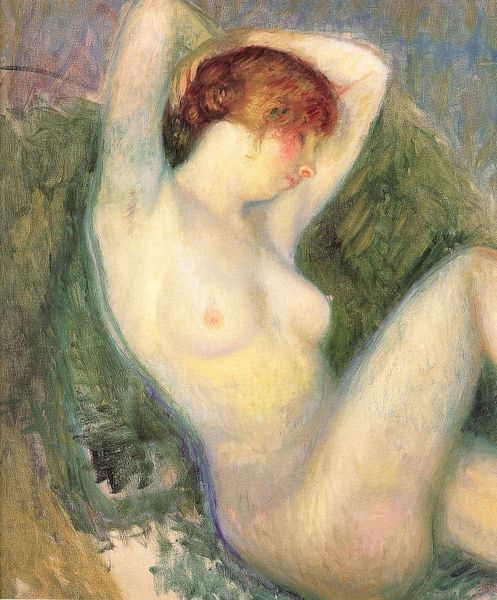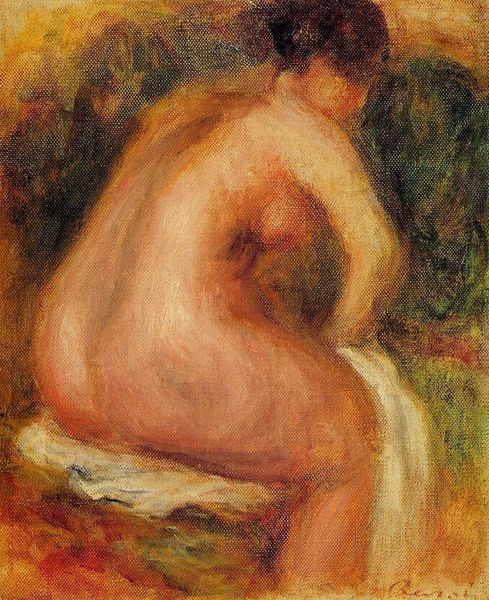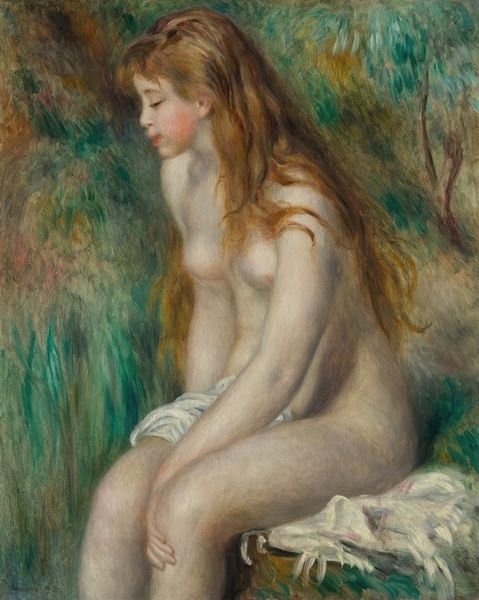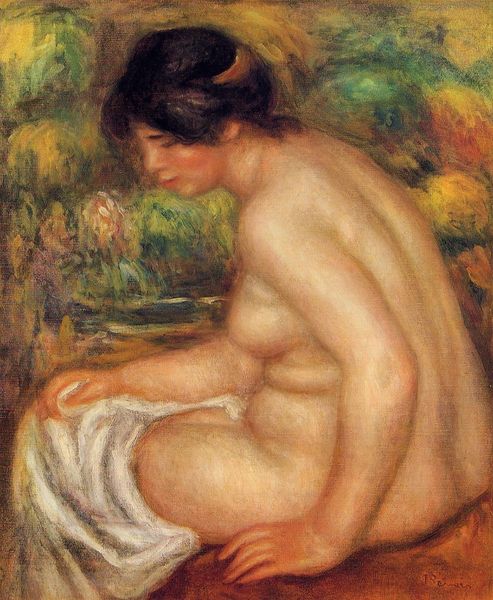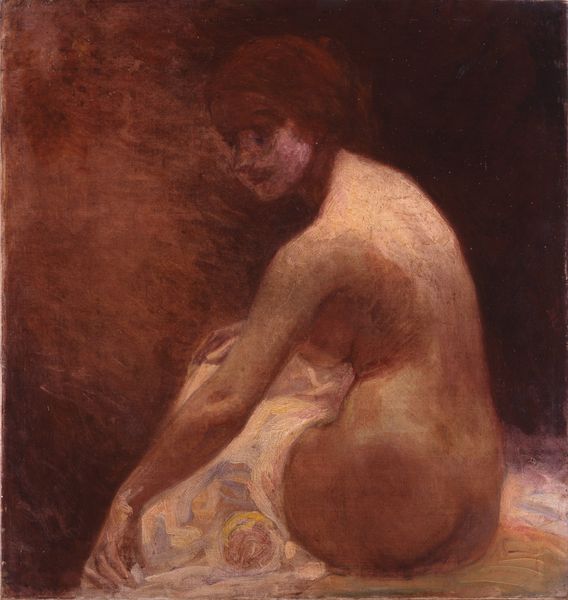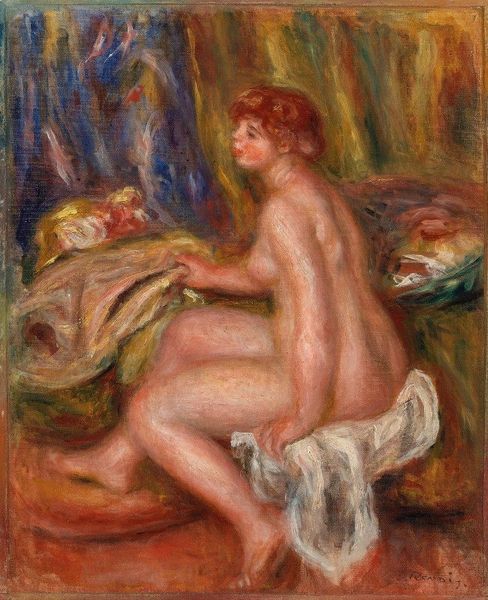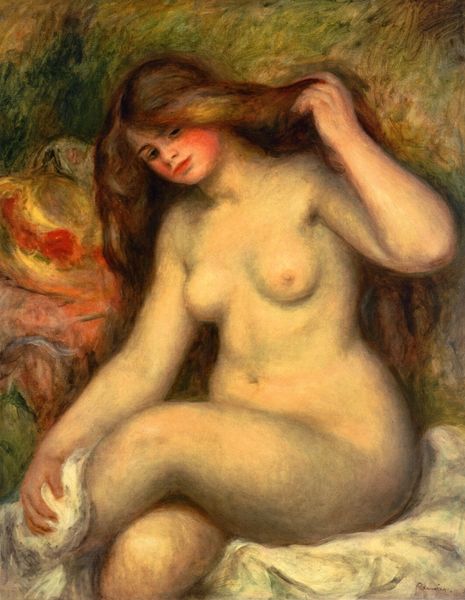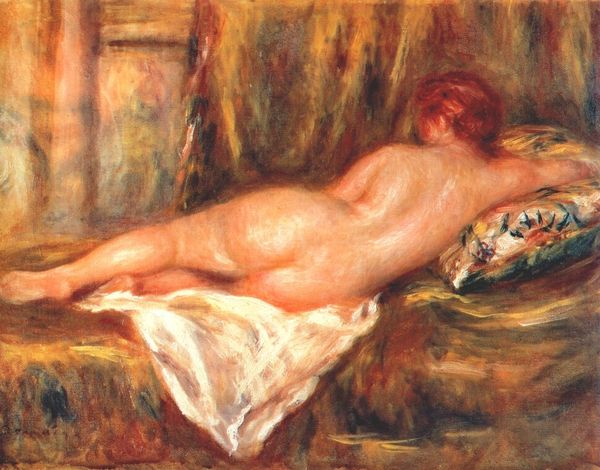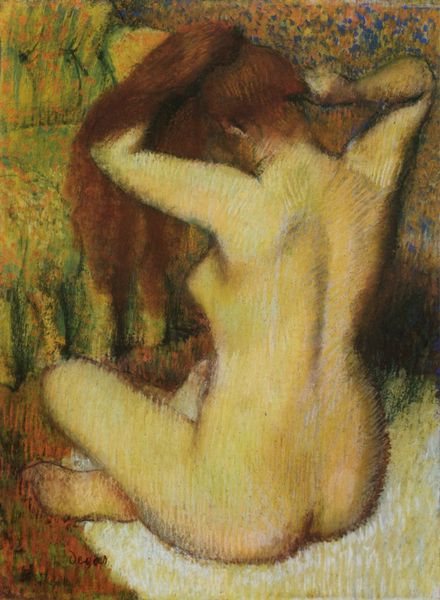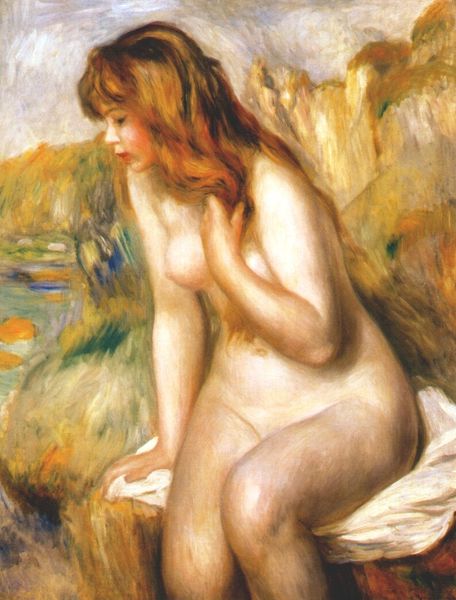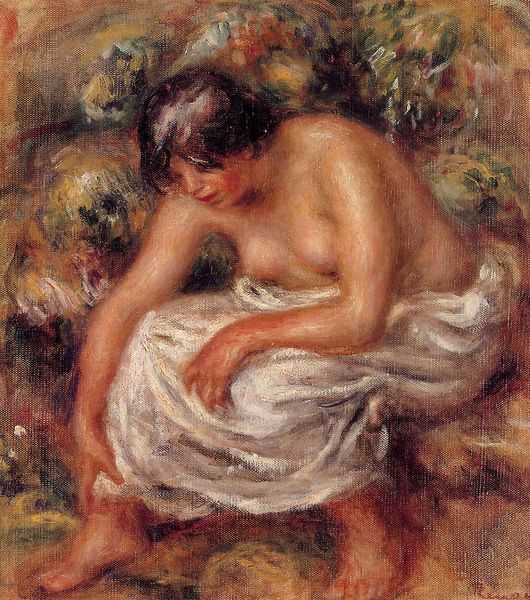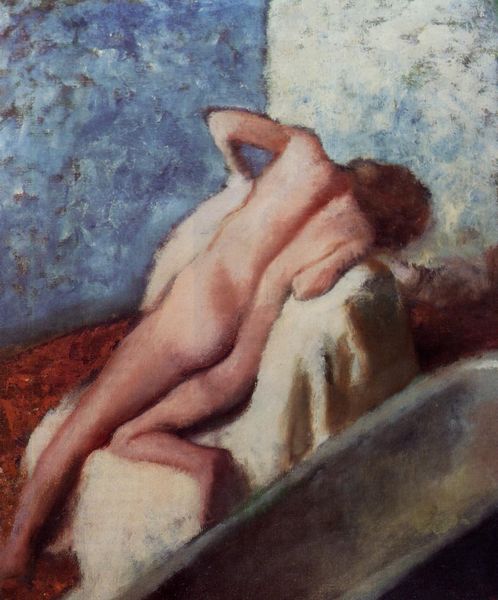
Copyright: Public domain
Editor: So, here we have William Glackens's "Back of nude," created in 1933, using oil paint. I'm immediately drawn to how soft and intimate the painting feels, despite not seeing the subject's face. The colours are warm and earthy, and there's something vulnerable about the posture. What do you see in this piece? Curator: The enduring power of the female nude lies in its ability to hold collective cultural memory. Think of Venus, or Eve. This isn't just a painting of a body; it's an echo of countless representations that tap into archetypal ideas about femininity, sensuality, and even vulnerability. Her pose, shielding her face, becomes a symbol itself. Editor: A symbol of what exactly? Curator: Perhaps a shielding from the male gaze, maybe even sorrow. In concealing her face, is she perhaps protecting her most intimate self from exposure, retreating into a space of contemplation or emotional vulnerability? What does this composition remind you of? Editor: Thinking about art history, there's a melancholic beauty, not unlike romantic era painting. Curator: Indeed, her vulnerability becomes her power in this work. Editor: I've always considered this piece through the lens of its formal elements, but hadn't fully explored how much symbolic meaning is imbued. Curator: Exactly. It serves as a powerful reminder that images can carry deeply resonant emotional and psychological weight across time and cultures.
Comments
No comments
Be the first to comment and join the conversation on the ultimate creative platform.
